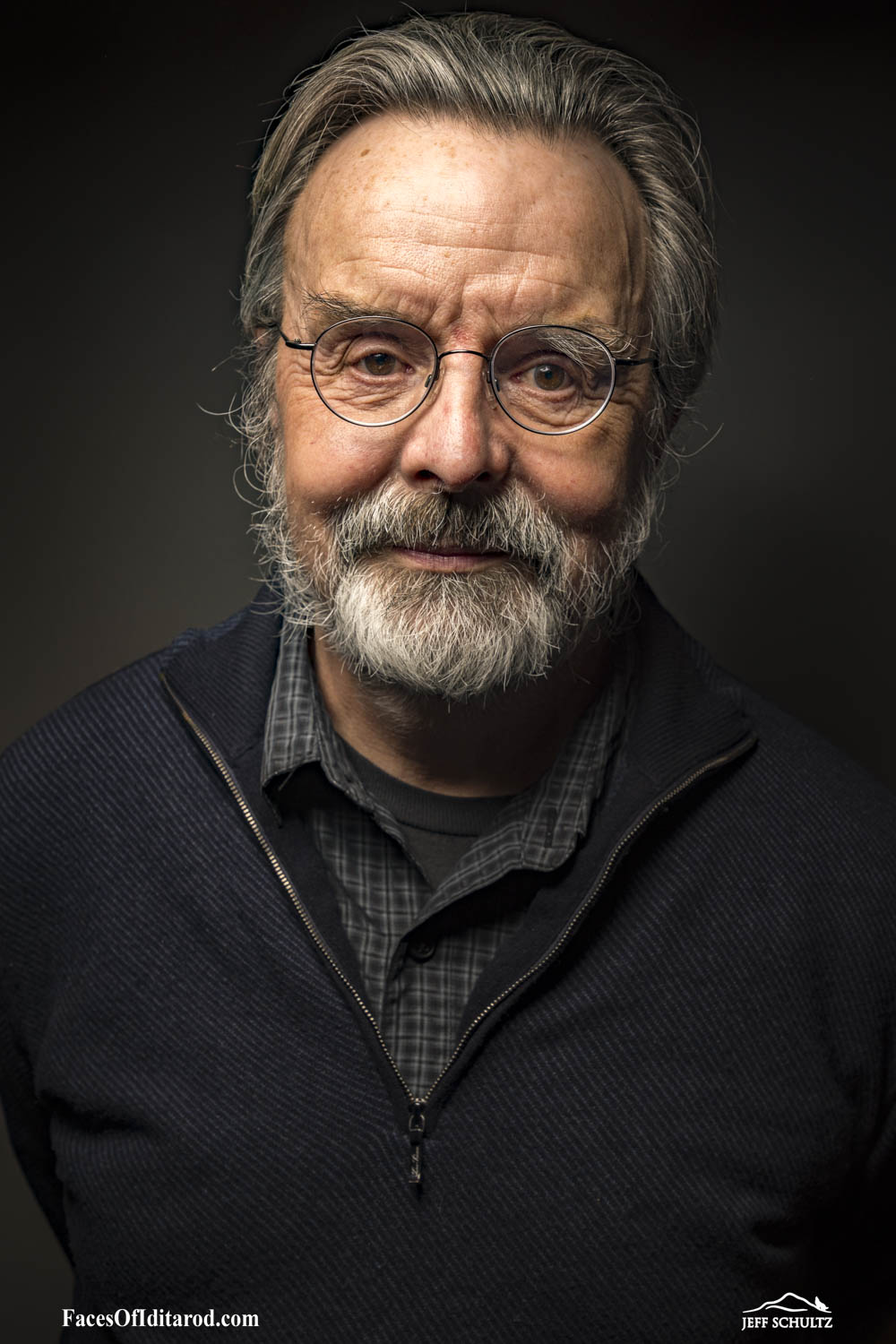HUMAN
Name: David Monson
Residence: Fairbanks, Alaska
Age: 76
Occupation: I still run a sled dog racing kennel, but also work with tourism in the summertime.
Years involved with Iditarod: I got involved with the Iditarod in 1980. And between my wife, Susan Butcher and I, I guess we’re still involved, or I am because I’m on the Iditarod Foundation board now, and my daughter’s starting to race.
Past Iditarod Roles: In the Iditarod, I have been a musher, I have been on the board of directors 15 years, and now I’m on the race foundation.
Current Location: Settler’s Bay Lodge in Wasilla, Alaska
Date of Photo: March 1, 2022
Temperature: 68 F Indoors
What, who or how and when did you first get involved with the Iditarod?
I got involved with the Iditarod in 1978. I came to Alaska in 77 and that was my first I first got involved in the Iditarod in 1980, in the fall of 1980 in Joe Reddington Senior’s dog lot. He and my wife, Susan Butcher, had just returned from climbing Mount McKinley, at the time it was called McKinley, and I wanted to run the Iditarod. Joe says, well, I know you don’t have any money, but I’ll give you a team of dogs, and he did. He said, but I’m not going to teach you anything. You’re going to have to find out on your own. And the first time I ever ran a dog team was with three dogs. We went down this hill, got to the bottom, every dog got into a big fight. I didn’t know what to do. Got them going back up the hill, and that was my introduction. I was hooked.
What was one of your most memorable Iditarod experiences?
Most memorable Iditarod experience was during my first race. I didn’t obviously know what I was doing. I think that’s the common way to start the race. I was going along on this trail, and not having ever been there I didn’t know where I was going, so my dogs went straight ahead over this little hill, down into a bunch of Devil’s Club, which if you’ve ever seen it, it’s like cactus. Then behind me comes Susan, and she’s piling into this thing, and then comes Emmett Peters. Susan is hot, and she starts grabbing dogs and just moving them this way, moving them that way, da da da da. We had 36 dogs in there. Finally we got all of them out on the trail, and I said, well, what should I do now? She said, there’s a clearing up here. What you have to do is go camp your dogs for 12 hours because they look tired. I said, okay, well it’s Susan. She must know what she’s talking about. So I went there. She stopped to camp. I fed the dogs, got in my sled, woke up 12 hours later, nobody there. Everybody had passed through. Everybody was gone. I never saw Susan again until the finish line, so she certainly knew how to get rid of the competition at that point. I learned a lesson: Keep one eye open when you’re sleeping.
What does the 50th running of the Iditarod mean to you?
Knowing this is the 50th running of the Iditarod, how does it make me feel? It makes me feel old is what it makes me feel like. But it makes me feel as though I am very blessed to have had all the memories that were created over all of these years and especially the first years, because those were the years when you didn’t know what was going to happen. Every day was an adventure. Coming around every corner was an adventure. You never knew where the trail was going to be, and you had to rely on your neighbors out there to get where you were going. Because it wasn’t assured that things were going to work out. I think I long for the old days, but I’m happy to be here and see how much the race has progressed.
What do you know for sure?:
I know for sure in life that you get one shot at the race and you have to give it all you have. It’s not just the Iditarod, it’s everything you do. Rejoice when the sun comes up in the morning, take advantage of it, and at night appreciate what you did.



